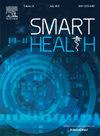Data-driven assessment of the effectiveness of non-pharmaceutical interventions on Covid spread mitigation in Italy
Q2 Health Professions
引用次数: 0
Abstract
To mitigate the impact of pandemics such as COVID-19, governments can implement various Non-Pharmaceutical Interventions (NPIs), ranging from the use of personal protective equipment to social distancing measures. While it has been demonstrated that NPIs can be effective over time, the assessment of their efficacy and the estimation of their cost-benefit ratio are still debated issues. For COVID-19, several authors have used case confirmation as a key parameter to assess the efficacy of NPIs. In this paper, we compare the efficacy of this parameter to that of the death rate, hospitalizations, and intensive care unit cases, in conjunction with human mobility indicators, in evaluating the effectiveness of NPIs. Our research uses data on daily COVID-19 cases and deaths, intensive care unit cases, hospitalizations, Google Mobility Reports, and NPI data from all Italian regions from March 2020 to May 2022. The evaluation method is based on the approach proposed by Wang et al., in 2020 to assess the impact of NPI efficacy and understand the effect of other parameters. Our results indicate that, when combined with human mobility indicators, the mortality rate and the number of intensive care units perform better than the number of cases in determining the efficacy of NPIs. These findings can assist policymakers in developing the best data-driven methods for dealing with confinement problems and planning for future outbreaks.
数据驱动评估意大利非药物干预措施对缓解Covid - 19传播的有效性
为了减轻COVID-19等大流行病的影响,各国政府可以实施各种非药物干预措施,从使用个人防护装备到保持社交距离措施。虽然已证明国家行动纲领可以长期有效,但评估其效力和估计其成本效益比仍然是有争议的问题。对于COVID-19,一些作者将病例确认作为评估npi效果的关键参数。在本文中,我们将该参数的有效性与死亡率、住院率和重症监护病房病例的有效性进行比较,并结合人类流动性指标来评估npi的有效性。我们的研究使用了2020年3月至2022年5月意大利所有地区的每日COVID-19病例和死亡、重症监护病房病例、住院情况、谷歌流动性报告和NPI数据。评估方法基于Wang等人在2020年提出的方法来评估NPI有效性的影响,并了解其他参数的影响。我们的研究结果表明,当与人的流动性指标相结合时,死亡率和重症监护病房数比病例数更能确定npi的疗效。这些发现可以帮助决策者制定最佳的数据驱动方法,以处理禁闭问题和规划未来的疫情。
本文章由计算机程序翻译,如有差异,请以英文原文为准。
求助全文
约1分钟内获得全文
求助全文

 求助内容:
求助内容: 应助结果提醒方式:
应助结果提醒方式:


